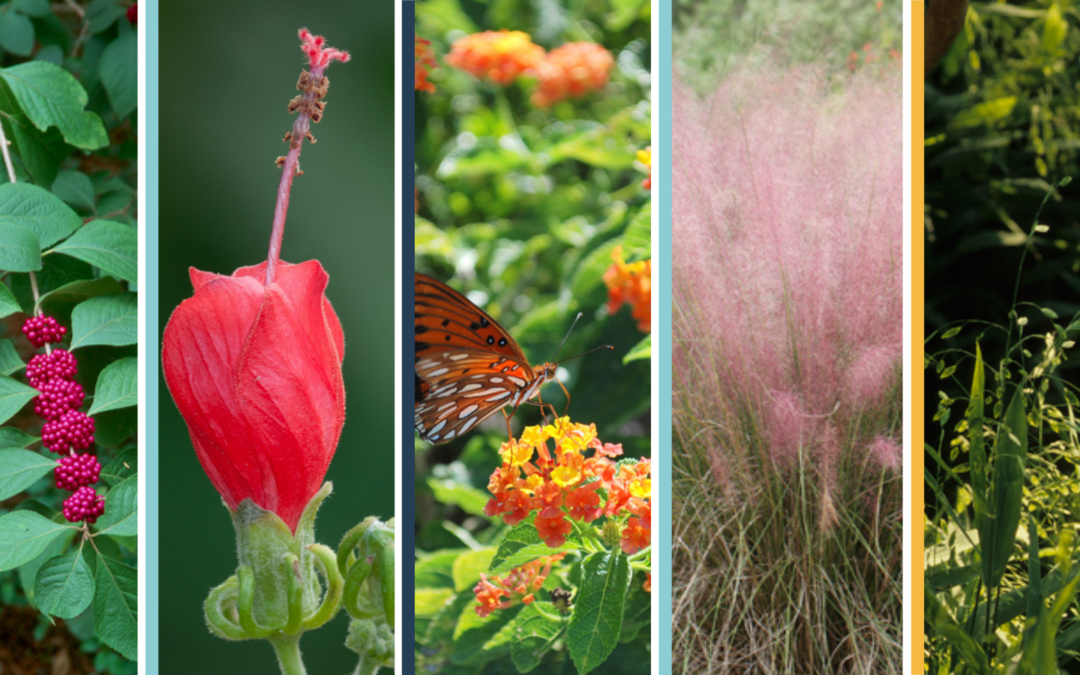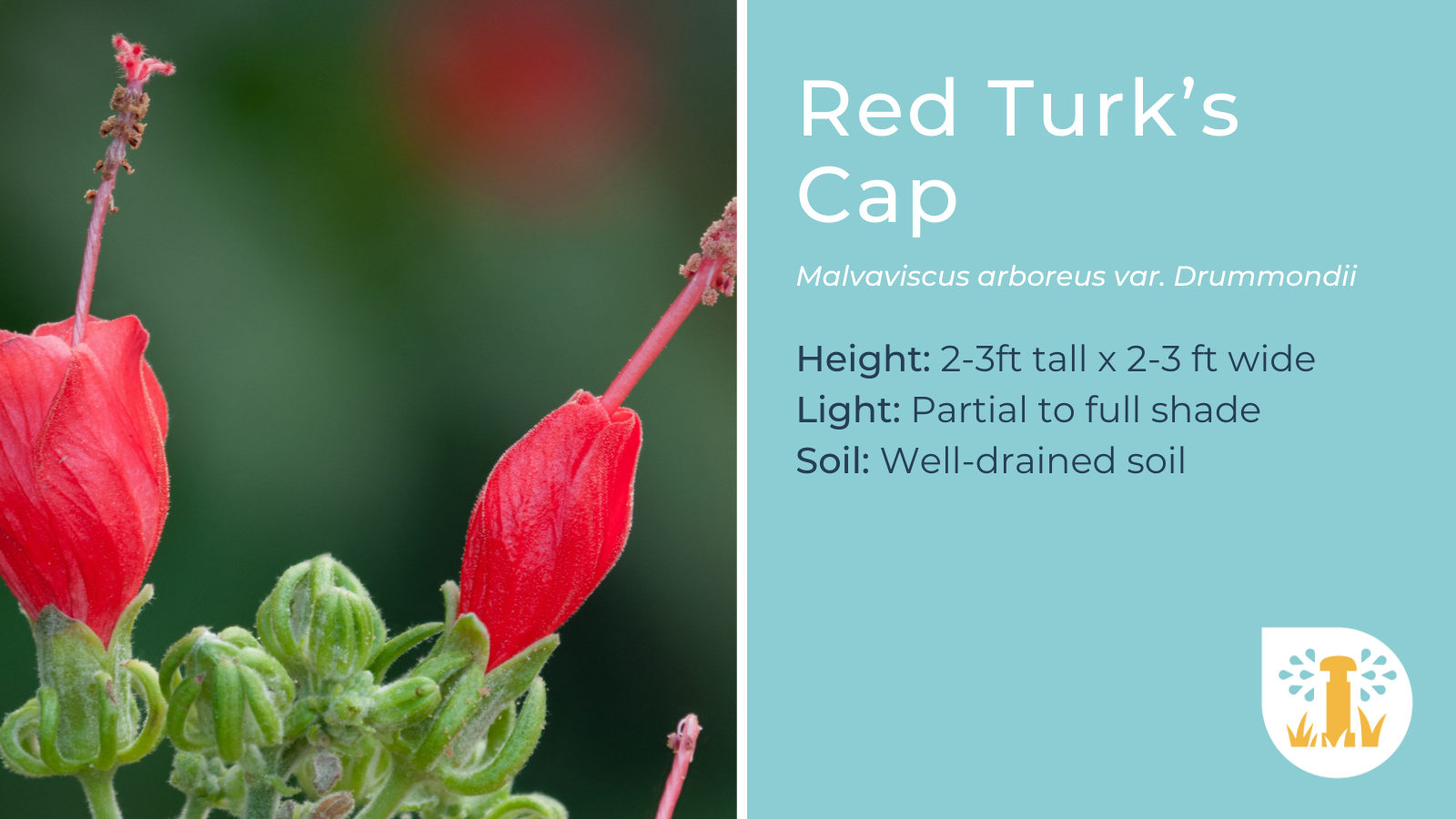Why is fall the best time for planting?
With the Texas heat finally cooling off, plants feel less stress and need less water to get established. However, it’s not too cold for plants to develop a stable root system in the warm ground before winter, and before the next summer’s heatwaves. While native plants are a great pick for being smarter about water by using less water overall, they also help local pollinators and wildlife.
Make informed plant decisions
Before getting those hands dirty or visiting a local nursery, evaluate the conditions of where you want to plant your native garden.
- How much sun does the area receive? More than 6 hours a day or is it mostly in the shade?
- What does the soil look like? Is it sandy, well-drained, or moist clay soil?
- Consider a variety of flowers, shrubs, and grasses. Different textures and colors help make flowers pop.
- Have a specific plant in mind already? Group plants together who require similar soil, light, and watering needs and avoid overwatering.
- Want to optimize your water conservation outdoor habits? Sprinkle the new plants with rainwater from a rainwater collection barrel
Below are some of our favorite native-Texas plants, including both shade-lovers and sun-seekers. For more local plant recommendations and nursery directories, check out the resources below.
This large deciduous (that means it loses its leaves in the winter!) shrub blooms May-July months with white and pink to deep purple flowers. In the fall, these blooms turn to vibrant purple berries, and the shrub can be cut to 12 inches above the base each winter to encourage more compact growth, flowers, and fruit. Learn more.
Butterflies love lantana, which blooms all summer long. Not only very drought resistant but also salt tolerant as well. In the fall, this shrub produces round fruit that’s dark blue to black. Learn more.
Large, airy seed head takes up most of this plant with purple spikelets. In the fall, the plant takes on a feathery, deep pink hue and functions well in meadow gardens and as a general garden plant. Learn more.
A shade-lover, this grass has bright green leaves that turn coppery after frost. Cut it down to its base in February for it to come back in the spring. Dropping seeds hang from arching steps and not only is it good for soil erosion, but birds also use its stems and leaves as nesting material. Learn more.
Another shade-lover, this spreading shrub produces bright red, hibiscus-like flowers from July to September that provides nectar for hummingbirds, butterflies, and moths. Turk’s Cap fruit is edible. Learn more.
Other Native Plants List for the Gulf Coast Region
All the above photos were pulled from the Lady Birdy Johnson Wildflower Center which also generates a great plant directory for the Gulf Coast region. For other plant lists and databases, check out these resources.
-
- Native Plant Society Houston chapter: Includes 5 ideas for getting started with Texas native plants, attracting wildlife, 100 native plants for Harris and surrounding counties, and a list of local nurseries.
- Katy Prairie Conservancy: Provides 9 shade and 9 sun-friendly native plants with landscaping recommendations, and where to purchase.
- Buchanan’s Native Plants: This local nursery in the Houston Heights shares its Top 10 Native Plants for Houston
- HERE in Houston: Specifically looking at using Texas natives for wildlife, find ideas and another list of local nurseries.
Smarter About Water does not recommend specific vendors or have any affiliation or endorse the entities listed above.






